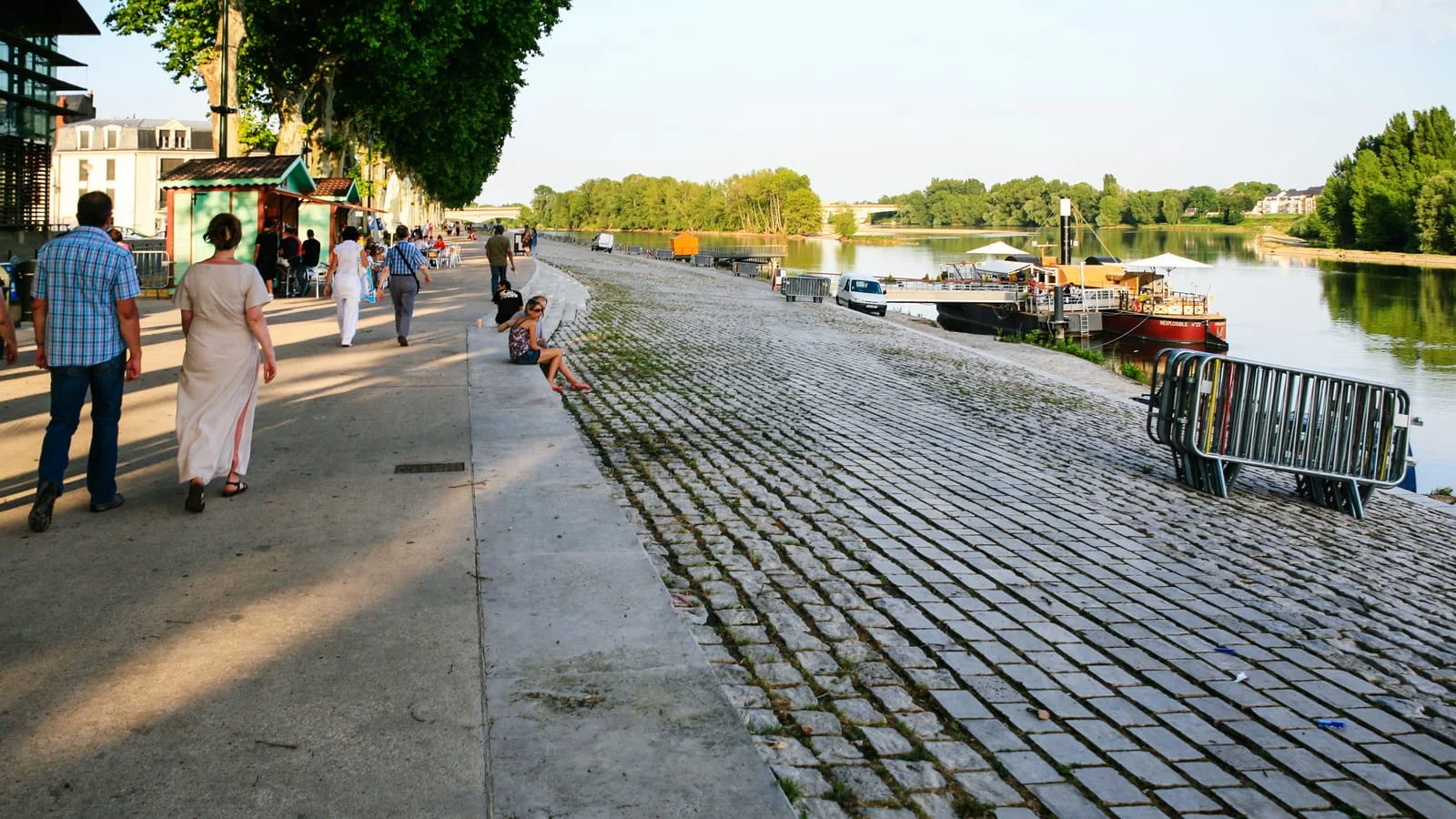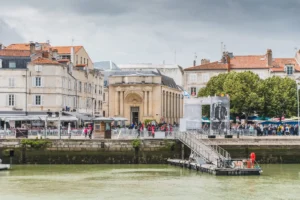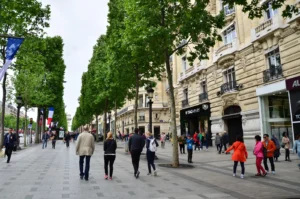France is an ideal destination for large family trips because it offers something for everyone, regardless of age. In fact, as one travel guide notes, “France is so large and diverse, it’s an ideal location for a family trip,” with “something to do” in every corner of the country.
Parents and kids can create unique memories here – for example, families have been known to go horseback riding on Mont-Saint-Michel’s beach or join a treasure-hunt tour through the Louvre museum.
With a rich mix of urban culture and rural charm, France lets multi-generational families tailor their reunion: from budget-friendly campsites (which often advertise “excellent value for money” and on-site activities like pools and kids’ club to luxury châteaux and villas with private pools and gardens. The sections below highlight top regions and attractions – city and country alike – along with family-friendly activities in each.
Paris & Île-de-France (Urban Adventure)
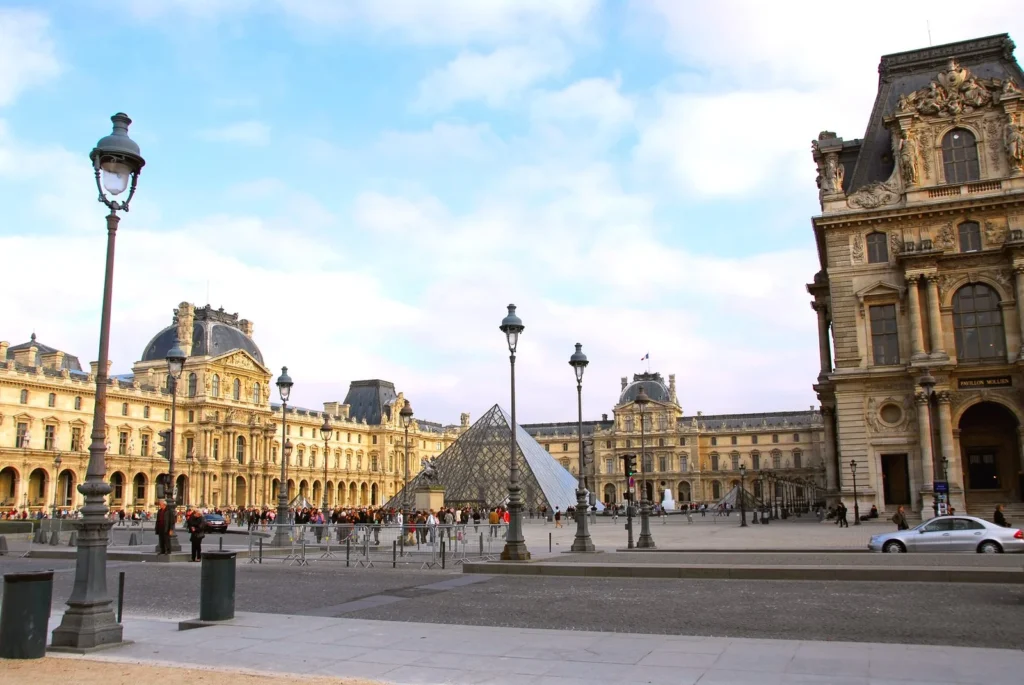
Surprisingly for a “city of love,” Paris is great for families. As one travel blogger found, Paris offers “something for everyone in the City of Light,” including world-famous history, landmarks, and fabulous cuisine. Families can mix sightseeing with fun child-focused experiences:
Treasure hunts in the Louvre
Guided scavenger tours make the vast Louvre Museum interactive and fun for kids (finding the Mona Lisa, Venus de Milo, etc.), as highlighted in family itineraries.
The Tuileries and Luxembourg Gardens are must-sees – each has children’s playgrounds and even an old-fashioned carousel that delights little ones. Just outside Paris, both Versailles and Disneyland Paris make fantastic family outings. Versailles lets children dress up and run in the palace gardens, while Disneyland has rides and shows for all ages.
Iconic landmarks
Of course, no visit is complete without the Eiffel Tower and Arc de Triomphe. Kids will remember riding the elevator up the Eiffel Tower, and the surrounding Champ de Mars park is perfect for picnics.
River cruise
A boat tour on the Seine offers a relaxing way to see many sights (Notre-Dame, Musée d’Orsay, etc.) from the water, giving tired legs a break.
Loire Valley & Châteaux (Fairy-Tale Castles and Countryside
The Loire Valley in central France is dotted with grand châteaux and gentle rivers – perfect for families who love history and the outdoors. This “fairy-tale” region truly has adventures for all ages:
Family cycling (Loire à Vélo)
The dedicated Loire River bike path is mostly flat and safe, meandering through vineyards and villages. For example, one family enjoyed an easy loop from Amboise to the Aquarium de Touraine, stopping at a riverfront guinguette (open-air café). Renting bikes (even tag-along bikes for little ones) is affordable and allows long stretches of countryside to be explored at leisure.
Unique stays
Spend a night in an underground troglodyte hotel built into the limestone cliffs (a fun novelty for kids). These cave lodgings or lakeside cabin rentals are surprisingly comfy and affordable in the valley.
Cultural towns
Stop in Tours or Saumur for local food markets and a dip in medieval swimming pools (Tours has a large children’s pool). In Orléans, older kids can take a scavenger-hunt city tour to learn about Joan of Arc.
Family winery visits
The Loire’s vineyards often welcome kids – some estates even offer grape juice tasting for little ones while adults sip wine. It’s educational and keeps everyone happy.
Loire Valley accommodations range from rustic cottages and camping to grand gîtes and even castle rentals. This variety, plus ample free outdoor space, makes it ideal for large families.
Dordogne & Périgord (Castles, Caves, and Nature)
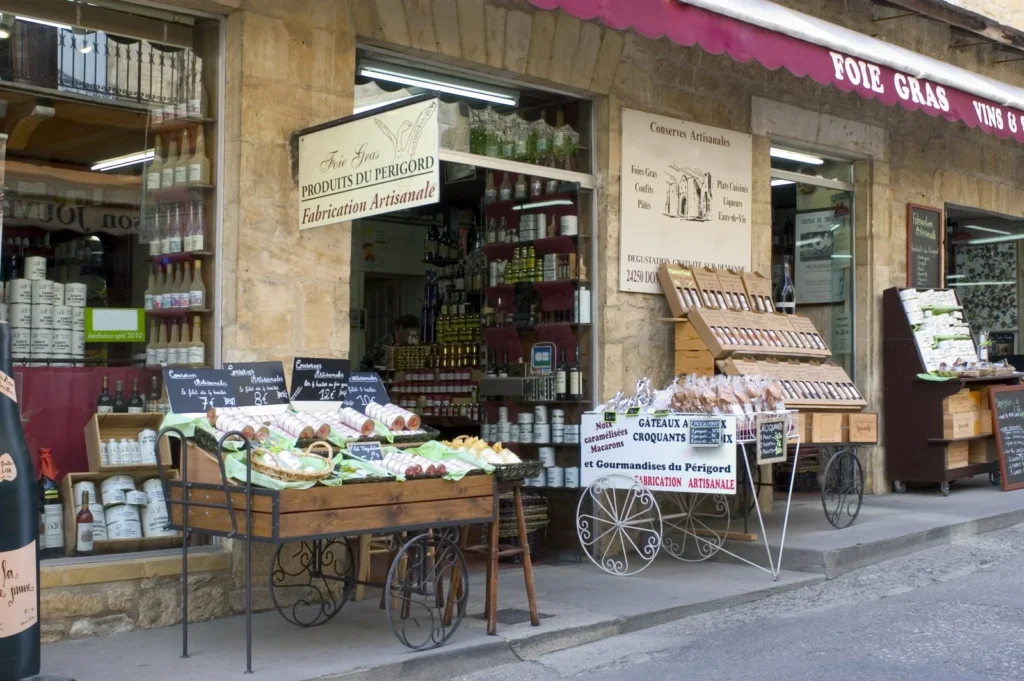
Just south of the Loire lies the Dordogne Valley (Périgord), another top pick for families. It feels like a medieval story come alive:
Medieval castles
Virtually every town has a château. Château de Castelnaud (near Sarlat) is a favorite – it’s full of real knights’ armor and fun demonstrations (catapult battles, falcon shows, and a gift shop with costumes and gelato). Château de Beynac clings to a cliff above the river – its stone towers and battlements excite kids’ imaginations.
River activities
Canoeing down the Dordogne River is a quintessential family outing here. Rentals are available in towns like Beynac or Saint-Cyprien, and routes can be as short as a couple of hours. Kids can wear the provided life vests and paddle through scenic stretches of forest and past castles on the hills. (And best of all, it’s not expensive.)
Swimming spots
The Dordogne is warm and calm. Locals will gladly point out shallow beaches or gravel bars where children can splash for free. The writer of one trip blog noted her kids spent hours in the refreshing river water – “what’s even better about this activity? It’s free (very nice after a week in pricey Paris)”.
Prehistoric caves
Visit Lascaux (or its replica) to see ancient cave paintings—an unforgettable lesson in history for older kids. Many other cave sites (e.g., Les Eyzies) have interactive exhibits.
Charming villages
Wander through towns like Sarlat (famous Saturday market), La Roque-Gageac (waterfront hamlet), and Domme (mountaintop village with panoramic views). Each has tree-lined squares, farm-to-table restaurants, and sometimes evening street fairs with music – great for strolling with the family.
Food and farms
The Périgord is also a gourmet paradise. Families can sample walnuts and truffles at local markets, and older kids may enjoy a cheese farm tour (for example, Cazelle cheese or foie gras workshops).
The Dordogne region is more rural and paced than Paris, making it easy to find large country homes, farmhouses (gîtes), or even glamping sites. Activities here tend to be low-cost or nature-based, making it excellent for budget travel while still feeling rich in experiences.
Bordeaux & Atlantic Coast (Beaches and Vineyards)
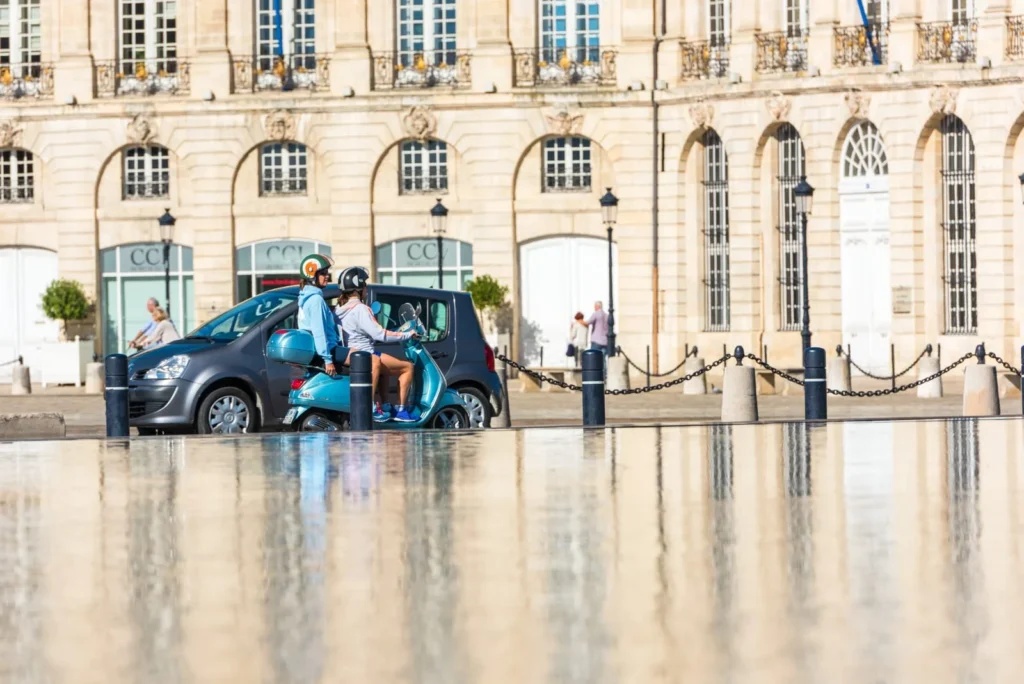
In southwestern France, the Bordeaux region and Atlantic coast combine culture, beaches, and nature:
Arcachon Bay
Just west of Bordeaux, Arcachon is a 19th-century seaside resort with wide sandy beaches and Belle Époque villas. Families love it for its relaxed atmosphere. Highlights include: walking along the Beach of Pereire or the Grand Crohot beach (both family-friendly), and visiting the Ville d’Hiver (“Winter Town”) district to see ornate 1800s villas.
Dune du Pilat
Nearby, the Dune du Pilat is Europe’s tallest dune. Kids (and adults!) enjoy climbing its slopes and sledging down the sand – a thrilling change of pace from beaches. From the top, you have sweeping views of the pine forest and the ocean.
Cap Ferret peninsula
On the other side of the bay, Cap Ferret is famous for its oyster-farming villages. Families can rent bikes or take a shuttle to Cap Ferret’s tip and enjoy fresh oysters on the quay, or splash in the ocean at Petit Nice beach.
Bordeaux city
The city of Bordeaux itself is very family-welcoming. Its entire pedestrianized center is a UNESCO World Heritage site. You can join a free family walking tour through the grand 18th-century squares and carousels.
A highlight for kids is the famous Miroir d’Eau (water mirror) at Place de la Bourse – they love running through the gentle fountain mist there. After playtime, pop into the Marché des Capucins or Chartrons Market to taste local treats (roast chicken, cannelés, macarons) at reasonable prices.
Wine-country excursions
The surrounding wine regions (Medoc, Saint-Émilion, Graves) can also entertain families. Some châteaux offer guided family tours or horseback vineyard rides, and many estates have open lawns where children can picnic. For example, Le Mas Fronsadais is a large country estate near Saint-Émilion with a swimming pool, and families can sometimes book tours that include lemonade-making (grape juice tasting) for kids.
Normandy & Brittany (History and Coastline)
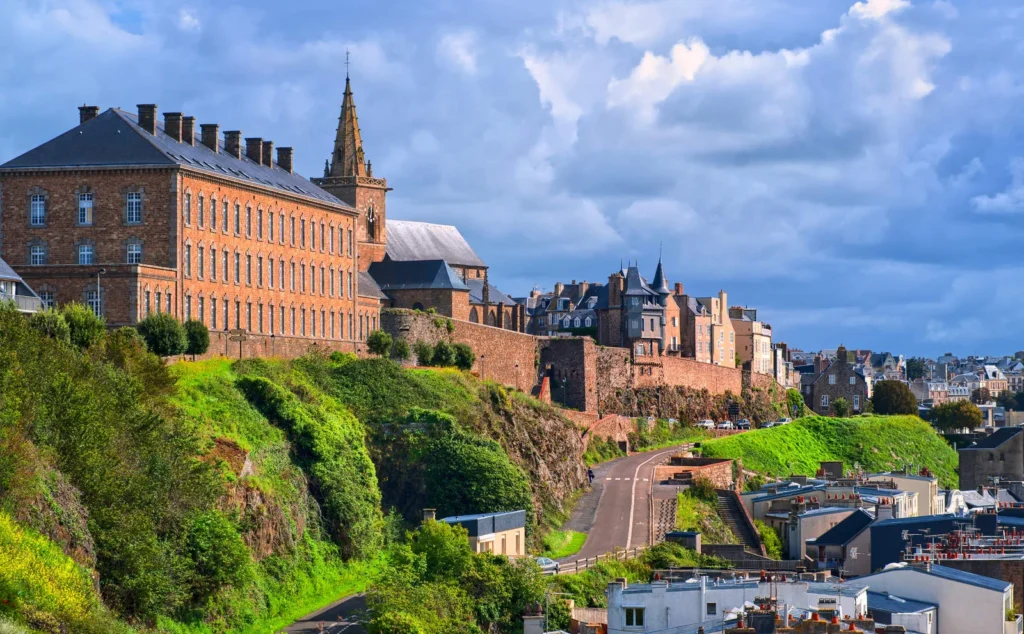
Northwestern France has two great neighbors – Normandy and Brittany – each with its own treasures for families:
Mont-Saint-Michel (Normandy/Brittany border)
This famous island abbey is a childhood favorite. Kids can scramble around the ancient walls and explore the narrow medieval streets. For a truly unique memory, families can go horseback riding on the tidal flats around Mont Saint-Michel – an experience cited as creating “unique family memories”. (Plan carefully: rides only at low tide and with a guide.)
World War II beaches (Normandy)
A visit to the D-Day landing beaches is educational for older kids. Families typically start at the Musée du Débarquement in Arromanches or the Caen Memorial museum to learn WWII history, then drive along the coast.
Highlight stops include Omaha, Utah, Gold, Juno, and Sword beaches (all marked with monuments and visitors’ centers). Older children often find the story of the Allied landings fascinating. A poignant stop is the American Cemetery at Colleville-sur-Mer, where rows of white crosses honor the fallen.
Honfleur and the local coast
Near the beaches lies Honfleur, a picturesque harbor town of timbered houses – a good lunch or art gallery stop. The entire Normandy coast offers gentle beaches (Étretat’s cliffs, Cabourg, Deauville) and fish restaurants to try cod and crepes.
Saint-Malo (Brittany)
On Brittany’s northern coast, the walled pirate city of Saint-Malo is a hit with kids. You can walk atop the ramparts, play on its wide sandy beach, and even cruise out to the fort on Cézembre Island. Breton crepes and cider are local specialties for the whole family.
Beyond Saint-Malo, Brittany’s rugged shore is beautiful: see the pink-rock beaches of Ploumanac’h, explore the Carnac stones (mysterious Bronze Age monoliths), or watch harbor seals at Océanopolis aquarium in Brest. In summer, families can schedule a day of sea kayaking or surfing lessons (Bretagne’s waves are surfable even for beginners).
Normandy and Brittany have a little bit of everything: maritime culture, history, and lush countryside. Accommodations can range from family-run seaside cottages and B&Bs to old manor houses and farm stays.
Particularly, Brittany’s gîtes (holiday homes) and Normandy’s farmhouse inns make for affordable large-group stays. Whether storm-watching on cliffs or combing tide pools, a trip to northwestern France is both educational and fun for children and grandparents alike.
French Alps (Mountain Adventure)
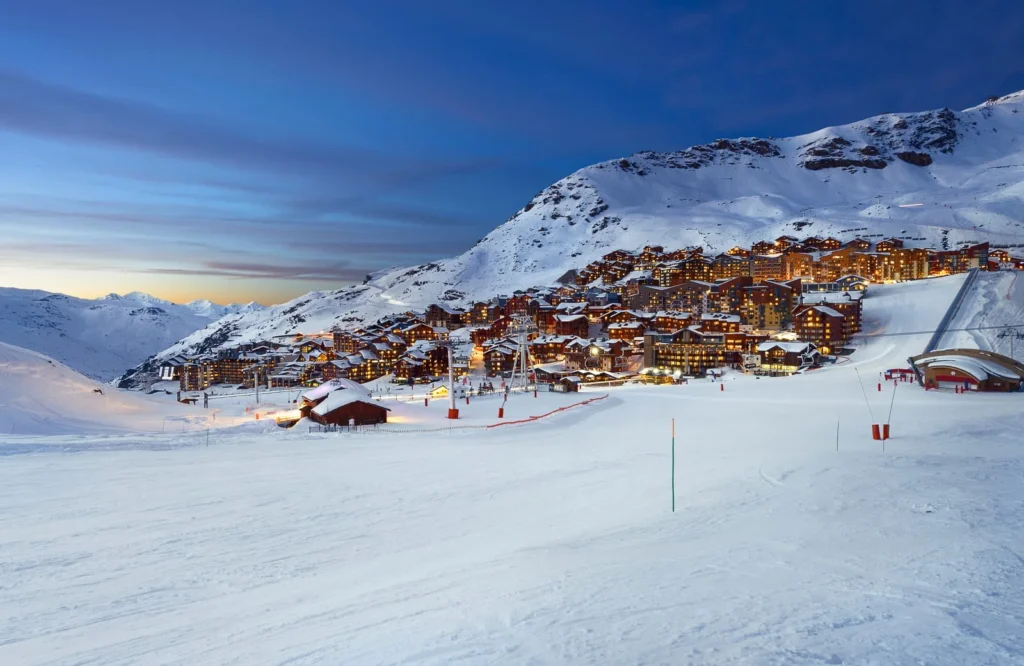
Finally, no French reunion itinerary is complete without a nod to the Alps (and nearby mountains). These offer outdoor adventure year-round:
Ski resorts (winter)
Resorts like Les Arcs, Chamonix, or Courchevel become playgrounds in winter. Slopes come in all difficulty levels, and family ski schools are abundant.
For example, Les Arcs (in Savoie) is praised by travelers for its family-friendly slopes and even a dedicated toboggan run for kids aged 4+. Many resorts have childcare/crèche services and Alpine water parks (Les Arcs 1800 has an indoor pool with slides) – perfect for après-ski splashing.
Mountain lakes and hikes (summer)
In warmer months, the mountains open up. Families can take cable cars or gondolas (like the Mont Blanc Tramway or Aiguille du Midi in Chamonix) for unforgettable views without the uphill walk.
Popular hikes include gentle trails around Lac Blanc (Chamonix) or Lac d’Annecy, where you can swim or rent pedal boats. Lake Annecy’s clear waters are ideal for paddleboarding or kayaking (a fun alternative to sea kayaking). Don’t miss the Levant waterfall in Annecy forest or the mountain toboggan runs (alpine slides) at many resorts for a thrill ride.
Local flavor
Be sure to sample mountain foods: raclette and fondue dinners (cheese behind glass and melted onto bread) are treats for older kids, and many places will simply serve sweet crepes or hot chocolate for the little ones.
In Chambéry or Albertville, you can even tour a Beaufort cheese factory (in a Parisian woman’s words, an “open gallery” to see massive wheels aging) and taste samples.
The Alps can be as budget-friendly or luxurious as you like.
- Budget: camping or hostel “refuge” stays, picnicking by lakes, hiking free trails.
- Mid-range: family chalets and self-catered apartments.
- Luxury: ski-in/ski-out hotels with pools and spas, or mountain lodges (refuges with hot meals).
Crucially, the Alps provide that “outdoor playground” nature that appeals to energetic kids and a cooling escape in summer. Whether it’s a simple hike or a high-end ski holiday, the mountains add adventure and fresh air to a family reunion itinerary.
Provence & Luberon (Lavender Fields and Hilltop Villages)
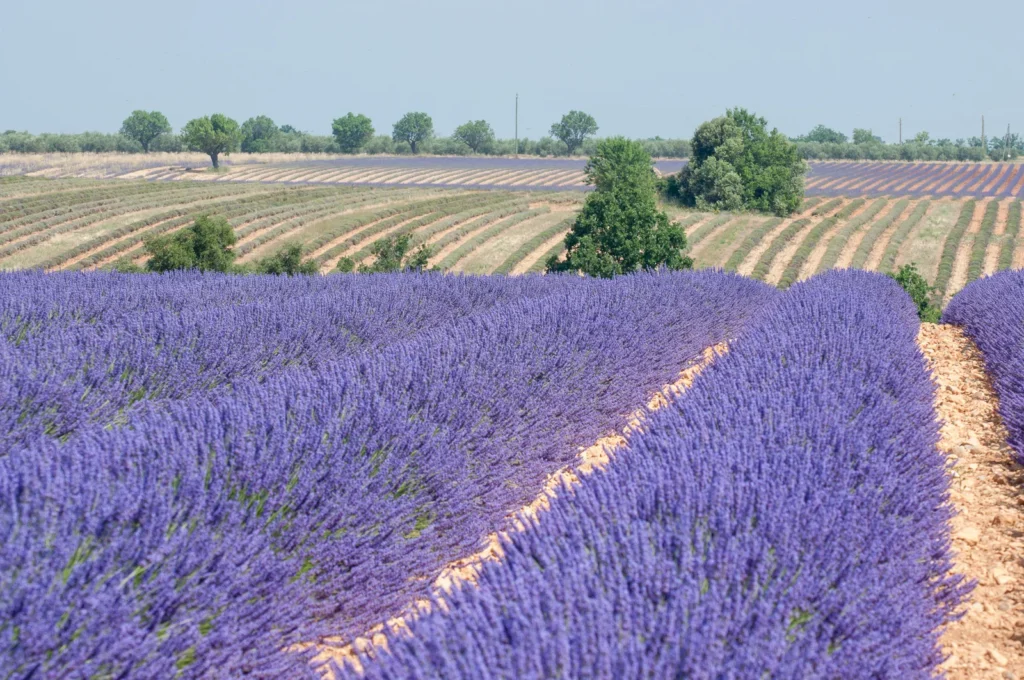
South of the Riviera, Provence offers an entirely different vibe – sunny countryside, historic villages, and fragrant landscapes. This is the Provence of lavender and olive groves. As one vacation guide colorfully puts it, Provence is “sunny holiday with Provençal charm: lavender fields, olive trees, cicadas and traditional bastides”.
Key family activities here include:
Hilltop villages
Wander through perched towns like Gordes, Roussillon (colorful ochre cliffs), and Bonnieux. These medieval villages look like storybook towns and are surprisingly fun for kids to explore. The panoramic views over sunflower and lavender fields are stunning.
Isle-sur-la-Sorgue (Venice of Provence)
This small town, literally built over the River Sorgue, has water wheels and canals. It even has a charming Antique Toy and Doll Museum that young children adore. (Kids can also ride a little tourist train through town or watch artisans make confiture in the street.)
Lavender and olive farms
In summer, take the kids out to see the lavender fields in bloom (especially around Coustellet and the Sénanque Abbey). The Museum of Lavender at Coustellet lets children sniff, press, and paint lavender flowers. You can picnic in these fragrant fields or watch traditional oil-pressing demonstrations.
Historic sites
Visit Avignon to see the massive 14th-century Palace of the Popes and walk (or bike) across the medieval bridge. Nearby Pont du Gard is a Roman aqueduct that kids enjoy climbing.
Provence has fantastic hiking and nature. Families can kayak or swim in the Calanques rock-walled inlets between Cassis and Marseille – there are boat tours and calm coves for a safe paddle. For a wilder experience, head to the Gorges du Verdon (“Grand Canyon of Provence”) for easy family hikes and riverside relaxation.
Bring Your Family Together at Château de Lasfonds
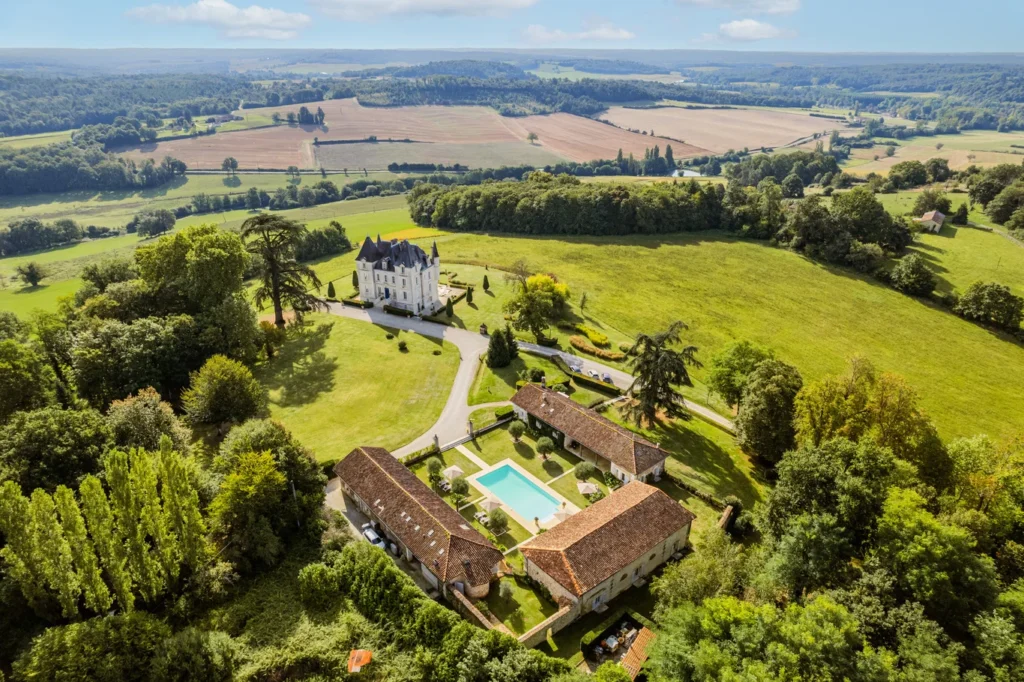
Imagine spending a week in a beautifully restored 19th-century château nestled in the green countryside of the Dordogne–Charentaise region, with a heated pool, a games room, and vast gardens where three generations can roam, relax, and reconnect. That’s precisely what Château de Lasfonds offers.
Details at a glance:
- Large villa-estate with the main château plus three guest buildings — perfect for grandparents, adult children, and younger ones to have their own space yet stay close.
- Weekly rates start from approximately €14,900 in low season to €19,980 in high season for full estate rental (2025 rates).
- Peaceful countryside setting, private pool, multiple living rooms, full kitchens, and the freedom to cook dinner together or bring in a private chef.
- Drive-in ready: about 30 minutes from TGV Angoulême and regional airports — rural tranquillity with access to culture, rivers, and villages.

If you’re planning a family reunion, this is your home base: flexible living, memorable scenery, and all generations —kids, parents, and grandparents —feeling equally comfortable. Choose your week, email them with your group size and dates, and ask about concierge and catering options. Their team will send availability, layout options, and booking terms.
When you want somewhere special for everyone to gather, laugh, relax, and make lasting memories — Château de Lasfonds is more than accommodation; it’s your reunion destination.
FAQs About Family Reunion Vacations in France
Late spring to early fall (May to September) is ideal for family reunions in France. The weather is warm, outdoor attractions are open, and countryside regions like Dordogne and Provence are in full bloom. July and August bring crowds and higher prices, so booking early or visiting in June or September offers better value and fewer tourists.
For multi-region trips, combine France’s high-speed TGV trains with car rentals. Trains connect major cities like Paris, Bordeaux, and Avignon efficiently, while cars help reach rural areas and vineyards. Renting a van or multi-seater vehicle saves time and cost compared to multiple cars. Many French highways have scenic rest stops perfect for family breaks or picnic lunches.
Gîtes (holiday homes), family-run inns, and rural farmhouses are top choices for large groups. They often include full kitchens, gardens, and multiple bedrooms. Booking platforms like Gîtes de France or Airbnb offer filters for large-capacity homes. For a budget-friendly reunion, consider off-season stays or countryside rentals in Dordogne or Loire Valley, where spacious options cost far less than city hotels.
For large groups, booking at least 6 to 9 months ahead is wise, especially for summer or holiday travel. Rural châteaux, villas, and gîtes tend to fill quickly for July and August. Early booking allows families to secure adjoining rooms or entire estates and often comes with better cancellation terms and group discounts.
Yes, France is full of communal dining experiences that work beautifully for large families. Book farm dinners in Provence, vineyard picnics in Bordeaux, or crêpe-making classes in Brittany. Weekly village markets are great for group picnics with fresh bread, cheeses, and fruits. Many rural restaurants also offer prix-fixe menus for groups, making it easy to share a multi-course local meal.
Balance high-energy days with relaxed ones. Combine walking tours or mild hikes with river cruises, museums with gardens, or short excursions with long picnic breaks. Many French destinations offer accessibility features like stroller-friendly paths and benches. Renting villas with pools or staying near train stations also helps older relatives and toddlers join without feeling left out or exhausted.
Group discounts are common in France. Book rail passes together, share large rentals instead of individual rooms, and cook a few meals at home. Traveling just outside peak season can cut costs by 30–40%. Look for combo tickets at attractions (e.g., museum passes or castle circuits) and use regional markets for affordable local food instead of eating out daily.
Choose one regional workshop or event that reflects local life — a cheese-making class in the Alps, a pottery workshop in Provence, or a folklore festival in Brittany. Join small-town evening concerts, farm visits, or seasonal fairs to experience real French community culture. These activities are authentic, family-inclusive, and create lasting memories beyond sightseeing.
Self-catering is key. Choose gîtes or villas with large kitchens and outdoor dining areas. Shop at local markets for fresh produce and regional specialties. For shared experiences, alternate between home-cooked dinners, picnics, and occasional restaurant meals. Many French supermarkets offer prepared local dishes, making it easy to enjoy French cuisine without constant dining-out expenses.
Personalize the reunion with small traditions. Host a family dinner under the vines, organize a photo shoot in lavender fields, or plan a storytelling night in a château courtyard. Create a shared scrapbook or map marking each region visited. France’s scenery lends itself to slow, connected moments — perfect for celebrating generations together in one unforgettable trip.
